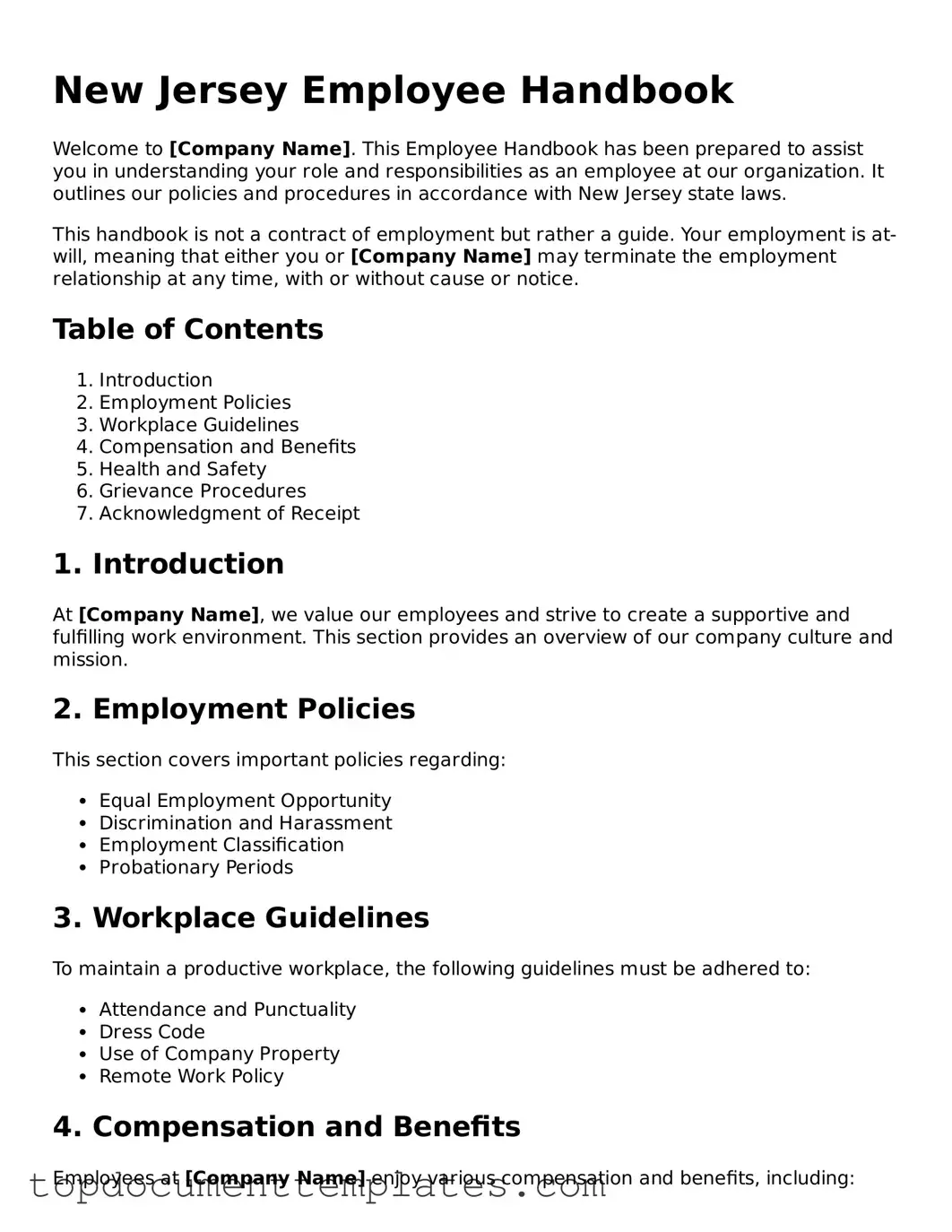Valid Employee Handbook Form for New Jersey State
The New Jersey Employee Handbook form serves as a crucial document that outlines the rights, responsibilities, and policies governing the employer-employee relationship within the state. This form not only helps ensure compliance with local labor laws but also fosters a clear understanding of workplace expectations. For employers and employees alike, having a well-structured handbook is essential for promoting a positive work environment.
Ready to create your Employee Handbook? Fill out the form by clicking the button below.
Open This Form
